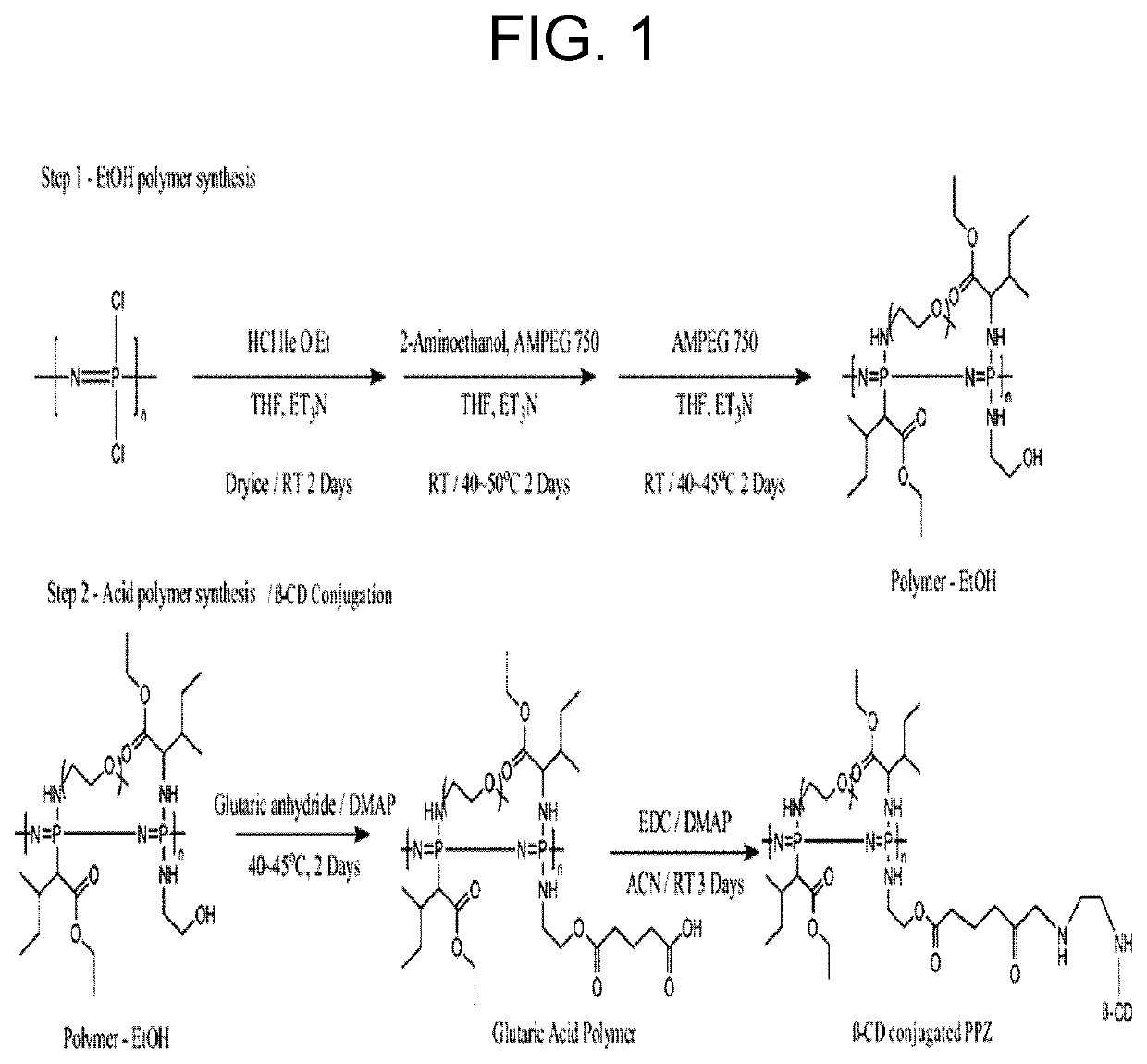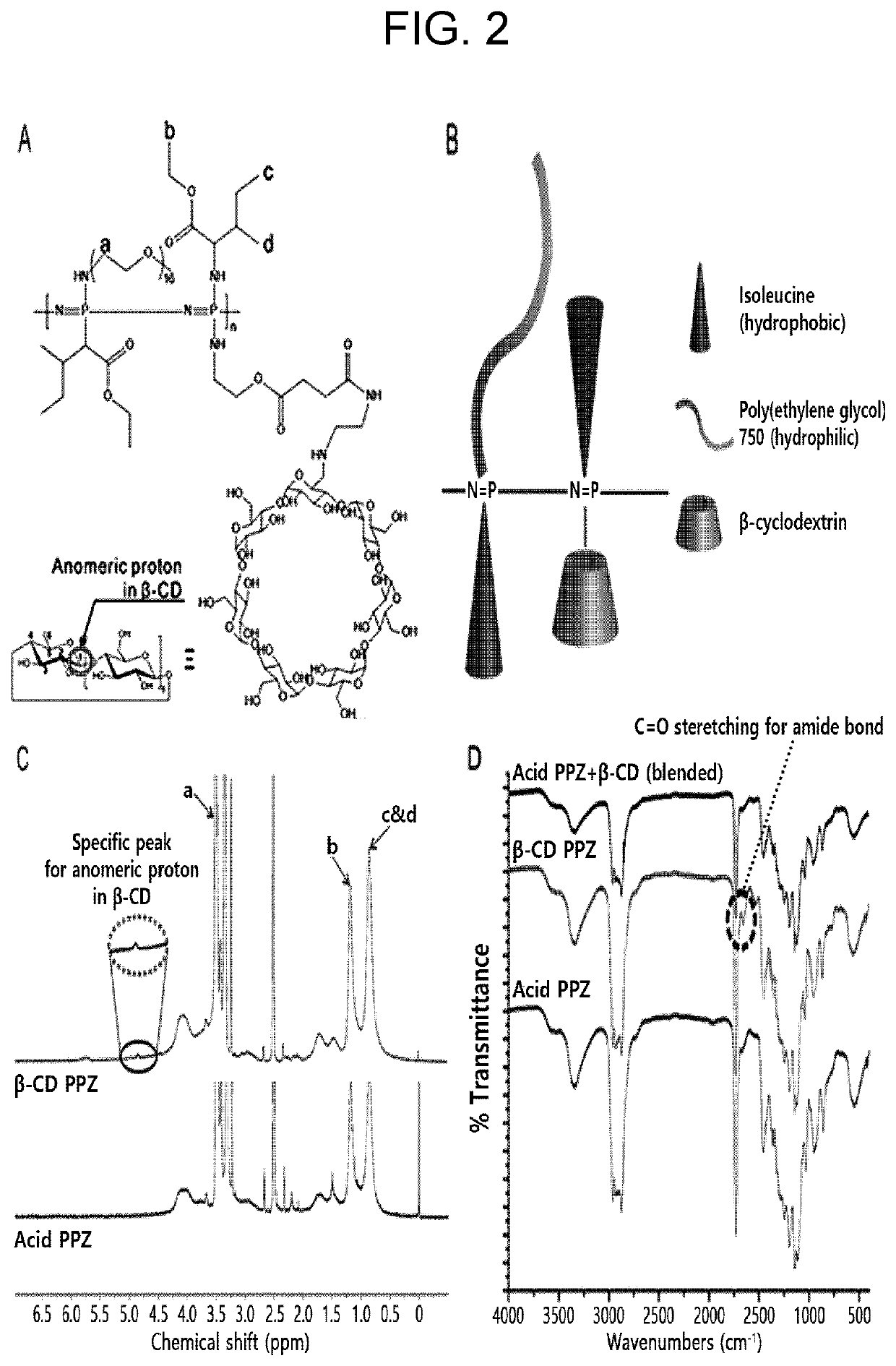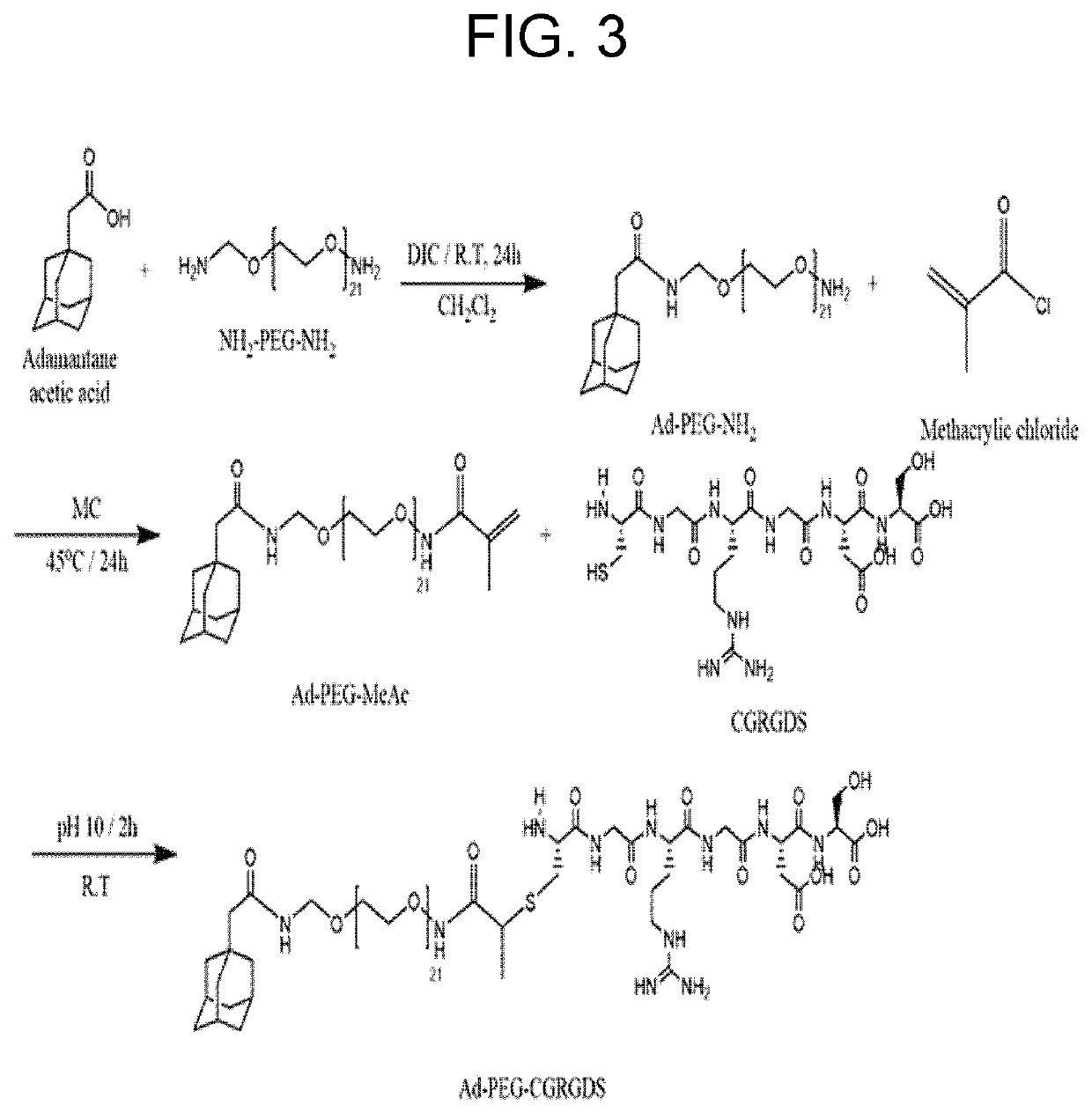Hydrogel inclusion complex including physiologically active material bound to thermosensitive poly(phosphazene) by host-guest interaction using beta-cyclodextrin and use thereof
- Summary
- Abstract
- Description
- Claims
- Application Information
AI Technical Summary
Benefits of technology
Problems solved by technology
Method used
Image
Examples
example 1
Composition Including β-CD PPZ and Adamantane-PEG-RGD
[0100]Materials
[0101]Hexachlorocyclotriphosphazene (Aldrich) was purified by sublimation at under vacuum (about 0.1 mmHg). Poly(dichlorophosphazene) was prepared according to a known method (Sohn, Y. S. et al., Macromolecules 1995, 28 (22), 7566-7568). It was prepared from hexachlorocyclotriphosphazene using aluminum chloride (AlCl3) as a catalyst at 250° C. for 5 hr. L-Isoleucine ethyl ester hydrochloride (IleOEt.HCl) was prepared from L-isoleucine (Aldrich) according to a known method. α-Amino-ω-methoxy-poly(ethylene glycol) (AMPEG) with a molecular weight of 750 Da was prepared according to a known method (Loccufier, J.; Crommen at. al., Die Makromolekulare Chemie, Rapid Communications 1991, 12 (3), 159-165). Tetrahydrofuran (THF) and triethylamine (TEA) (Junsei Chemical Co., Ltd.) were purified under the dry nitrogen atmosphere by refluxing at the boiling point over sodium metal / benzophenone (Acros) and barium oxide (Acros). β...
experimental example 1
ence of Host-Guest Interaction by Control of Ad-RGD Amount in Conjugate of Example 1
[0118]In this example, it was hypothesized that binding affinity between β-CD and Ad-RGD would induce the well-controlled guest molecule amount through the Ad-RGDs inserted at different amounts with one another. First of all, β-CD PPZ and β-CD PPZ+Ad-RGD gave different results from measurement of dynamic light scattering (DLS). The average particle size of β-CD PPZ and β-CD PPZ+Ad-RGD in an aqueous environment were 121.3±26.2 nm and 180.3±32.4 nm, respectively. As Ad-RGDs were included in β-CD PPZ-, the practical size of aqueous particles of β-CD PPZ+Ad-RGD was increased.
[0119]To elucidate the direct evidence of the host-guest interaction, the integration values of 2D-NOESY of β-CD PPZ and Ad-RGD was measured with the increase of guest molecules. First of all, in the 2D-NOESY results, the inclusion complex was confirmed at cross peaks composed of Ad protons of methylene (Ha, Hc), methane (Hb), and β-...
experimental example 3
y of Conjugate of Example 1 on Mesenchymal Stem Cell Viability and Differentiation Control
[0122](1) Cell Culture Method
[0123]Mouse mesenchymal stem cells (mMSCs) were purchased from Cyagen Biosciences Inc. mMSCs were cultured with Dulbecco's Modified Eagle's medium (DMEM) (Gibco BRL, Grand Island, N.Y.) containing 1% penicillin-streptomycin (Sigma-aldrich, USA) and 10% fetal bovine serum (FBS) (Welgene, Korea) in dishes at 37° C. in a humidified atmosphere of 5% CO2 and 95% air.
[0124](2) Live / Dead Cell Viability Assay of Mesenchymal Stem cells & measurement of CCK-8 cultured with 3D hydrogel niche
[0125]Harvested mMSCs (passage 7, 5×105 cells) were suspended in 0.1 mL of 10 wt % prepared hydrogel. mMSC / hydrogel mixtures were incubated in a 24-well culture plate with a cell insert.
[0126]At day 0, day 1, day 3, and day 7, the cell medium was removed, and calcein AM / ethidium homodimer-1 (Live / dead cell viability assay kit, Thermo Fisher Scientific Inc.) dissolved in a DPBS solution was ...
PUM
| Property | Measurement | Unit |
|---|---|---|
| Mass | aaaaa | aaaaa |
| Mass | aaaaa | aaaaa |
| Thermosensitivity | aaaaa | aaaaa |
Abstract
Description
Claims
Application Information
 Login to View More
Login to View More - R&D
- Intellectual Property
- Life Sciences
- Materials
- Tech Scout
- Unparalleled Data Quality
- Higher Quality Content
- 60% Fewer Hallucinations
Browse by: Latest US Patents, China's latest patents, Technical Efficacy Thesaurus, Application Domain, Technology Topic, Popular Technical Reports.
© 2025 PatSnap. All rights reserved.Legal|Privacy policy|Modern Slavery Act Transparency Statement|Sitemap|About US| Contact US: help@patsnap.com



